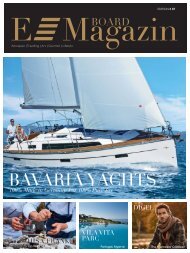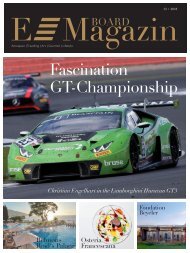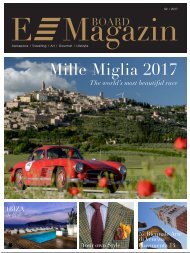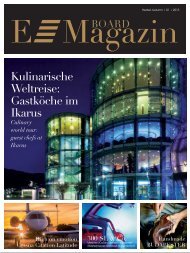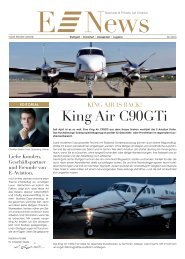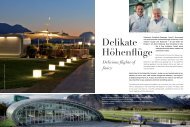Hans-Joachim Pahnke Book
Create successful ePaper yourself
Turn your PDF publications into a flip-book with our unique Google optimized e-Paper software.
38 39
The isothermal forging press
With the direct pump drive of the twelve main pumps,
the closed die forging press achieved the desired pressing
speed for the forging of aluminum alloys. Because
titanium material was also forged at Weber, a press
speed of approximately 80 mm/s also had to be achieved
here, however limited for a stroke of 100 mm. To
meet this requirement, the hydraulic drive station was
equipped with an oil accumulator station with sufficient
oil volume. The energy stored there and provided
by the main pumps was routed through servo valves
into the main cylinder and discharged again.
Closed die forging presses for Weber Metals:
300 MN / 350 MN (left) and 110 MN (middle and right)
MESTA built the press in accordance with the construction
drawings of Hans-Joachim Pahnke; the hydraulic
drives were manufactured by PSI in accordance with
their own drafts and those of PAHNKE. Put into operation
in 1982, the 300 MN closed die forging press for
Weber Metals turned out to be a great success for
everybody involved. As a result of this positive experience,
Hans-Joachim Pahnke received more orders, one
for a 110 MN push down closed die forging press
(1989) and others for new electronic control units on
all seven forging presses (2002 to 2007).
The comprehensive experiences in high-quality press
construction and related drive technology that was
gained allowed Hans-Joachim Pahnke to take an order
for an isothermal forging press in 1986. An isothermal
press forges superalloys to near end shape with heated
dies – with the speeds required for the superplastic
forming process.
This means that the press speed must first be freely
adjustable from 25 mm/s down to 2 mm/min and then
controllable in this low range. The dies were inductively
heated inside the press to a temperature of 900° C.
Because this press was also to carry out open die forging
at 6 MN, a working piston with four times as
much speed with the same drive had to be available.
To this end, a new working cylinder design was developed,
so that the force of 20 MN or 6 MN is always
transmitted in the same axis. The result was the first
use of a cylinder with dual pistons (2 in 1). Many years
later, namely 2008, this design was also used for the
construction of open die presses with large forces: 60
MN (for Tong Di) and 43 MN (for Villares Metals).
This concept of a main cylinder of 2 in 1 working pistons
has clear cost benefits, because it allows the
press frames to be constructed more cost-effectively.
As a result of the power always being transmitted in
the centre of the movable cross head (or moving
beam) there are no bending loads in the cross-beam,
as there are with a three-cylinder design. A 60 MN
press of this design that was subsequently made also
showed that this concept should only be used for a
pressing force of up to 50 to 60 MN, because the necessary
cylinder design can only be manufactured by
a few firms in the world.
.
20 MN isothermal press with power levels of
15 and 6 MN with in-built ISO tools (1986)






